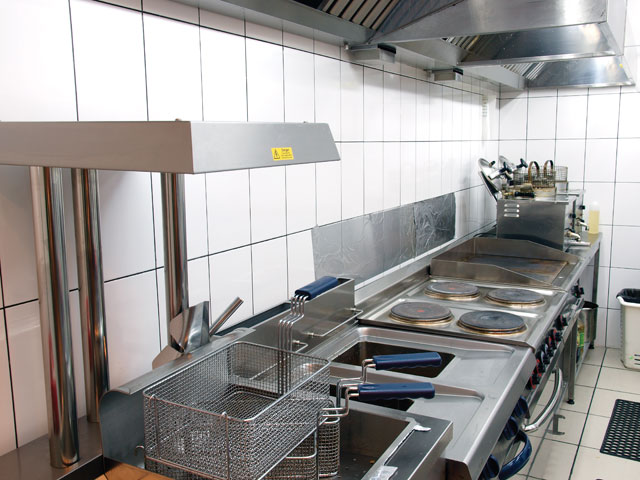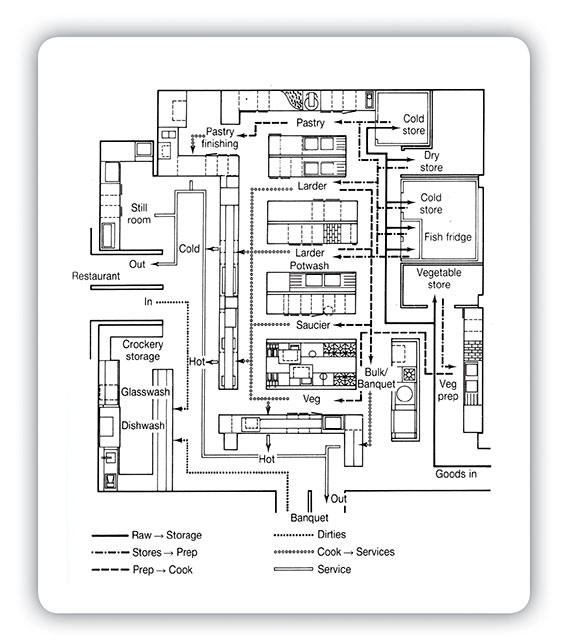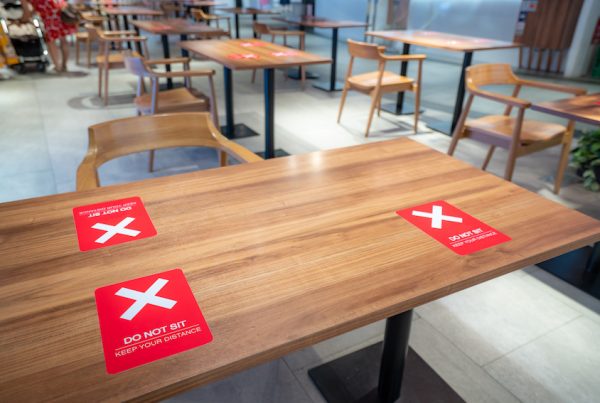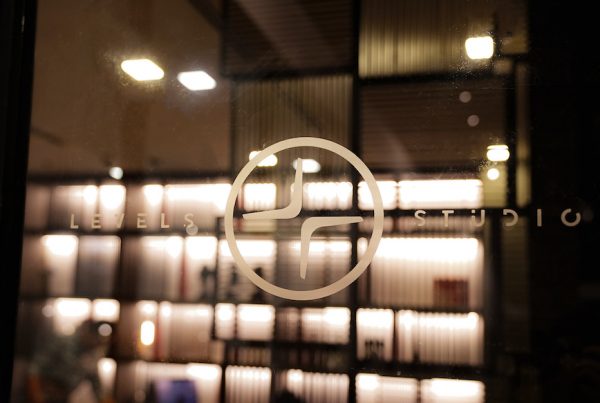 My first foray into an industrial kitchen during my hospitality school days was something that i’ll never forget. “Mise En Place” was my first lesson. We were drilled in on the importance of “MISE EN PLACE” in a kitchen environment – you have to have the right tools and the right ingredient in the right place before you start anything in a kitchen.
My first foray into an industrial kitchen during my hospitality school days was something that i’ll never forget. “Mise En Place” was my first lesson. We were drilled in on the importance of “MISE EN PLACE” in a kitchen environment – you have to have the right tools and the right ingredient in the right place before you start anything in a kitchen.
The training kitchen was a good class size of about 10 to 12 students and the equipments inside these kitchens was definitely not something I could immediately start using confidently. It’s Huge size and robust feel – may sometimes makes one feel intimidated. Though the equipments were packed with safety features, it will still be dangerous if you do not pay attention when the lecturers were giving instructions on how to operate them.
Basic safety rules were drilled into our heads – from our attire to how we hold or handle knives or sharp instruments and also the “DO NOT RUN” policy in the kitchen. It was then that it created an impact in my mind that a commercial kitchen is a total different environment from what a kitchen at home. And yes, you still do not run when holding a knife or sharp instrument, even if you were at home!
You would be working in teams, depending on the size of the establishment – the number can vary tremendously. The size of the kitchen and it’s areas also varies greatly. The organisation would entail more than just a head chef and his assistants.
Extracted from one of my textbooks, below is a design of a well-planned kitchen. It is also a conventional design that I think many restaurants may not be able to adopt fully today. Space is a luxury in the kitchen of today and kitchen staffs are expected to multi task with the help of technology and modern equipment. But as we are going back to basics, let us take a trip to re-introduce what a kitchen used to be. Introduced by Auguste Escoffier in the late nineteenth century when labour was relatively cheap, skilled and plentiful – menus were elaborate and extensive. In response to this, kitchens had many divisions or stations as we call them.
From the beginning, whenever able – your inventory comes in from the back – where it would make good sense to have a basic prep and cleaning area. Close by would also house the storage areas of all cold and dry items. Noticed that there are 2 cold rooms – one for meat & fish and the other for other cold items like dairy products or cheese. A dry store is allocated as well into the space for dry items like canned goods or bottled ingredients.
In the middle – there are 4 other stations and this varies depending on the menu that the restaurant serves.
• Pastry – Sweets & pastries are made within this area. And unless the establishment has a bakery located separately, baking would be done within the pastry area as well.
• Larders – This area is also sometimes identified as the Garde Manger or Commissary. A cold commissary would basically prepare cold items like salads, cold cuts and sandwiches for appetizers and canapés. But a hot larder would normally look into preparation of savoury fillings for pastries or the preparation of the decorations or condiments for dishes.
• Saucier – This position prepares sauces, stews and hot hors d’oeuvres and sautés food to order. This is usually the highest position of all stations.
• Veg Station – prepares vegetables, soups, starches and eggs.
And on the left of the diagram – the point that is closest to the exits out to your customers are basically 2 sections – the stillroom and the washing area.
• Stillroom – The stillroom is used for the preparation and service of all beverage, as well as bread and butter, rolls & toast. Simple afternoon teas are also served from the stillroom.
• Crockery Storage & Washing Area – As the name speaks for itself – either glasses or dishes are all washed and stored temporarily after washing at this area before it is being picked up to be placed in the kitchen for use.
If you look at the arrows indicated, traffic flows in a line to reduce cross traffic between sections. This design was even able to accommodate 2 dining areas – 1 for banquet and the other to a restaurant.
 Though the textbook was published in 1989, I believe the sensible and logical layout is still very much practiced today despite the advancement in technology and the different techniques in food preparation applied today.
Though the textbook was published in 1989, I believe the sensible and logical layout is still very much practiced today despite the advancement in technology and the different techniques in food preparation applied today.
This writer will be visiting many more kitchens and I look forward to exploring new ideas in the upcoming issues with you.
[box style=”rounded” border=”full”] Drawing and content extracted from:
The Theory of Catering – 6th edition (1989) by Ronald Kinton & Victor Ceserani
[/box]










